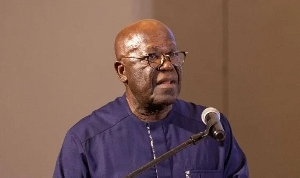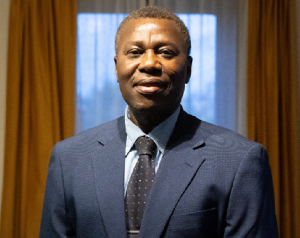General News of Monday, 29 August 2016
Source: B&FT
Tertairy education sector growing - Professor Dzidonu
The latest list of accredited tertiary institutions from the National Accreditation Board (NAB) has revealed that the country's higher education sector is growing, with about 195 institutions operating currently with accreditation.
These institutions have the permission from the NAB to run various degree and diploma programmes.
The figures show that there are 85-degree awarding-institutions from both the public and privately-owned tertiary level.
The country also has about 46 Colleges of Education, 27 Nurses Training Colleges from both the private and public sectors, six distance learning from both the public and privately owned tertiary level.
Though the figures suggest the country's higher education sector is growing, Prof Clement Dzidonu, President of the Accra Institute of Technology (AIT), believes that the country does not have enough tertiary institutions for its growing population, and demand for higher education by qualified applicants remains in short supply.
“Looking at the gross enrolment rate for tertiary education, the country is now registering 10 percent compared to the global average of 27 percent.”
For a population of 25 million, Prof Dzidonu said the number of institutions translates into a university per capita rate of around 3.5 compared to the global average of 18.6.
“Based on these figures, one is inclined to conclude that on the demand-side, Ghana neither has enough universities for its growing population, nor has enough university places for its growing university going age- group. In other words, we need more university places to meet growing demand for higher education by qualifiedapplicants,” he said.
On the supply-side of the equation, as it relates to the output of graduates from these institutions, he said, one would expect that since less than expected are enrolled in the universities, then graduate output from these institutions will be less than what is expected for meeting the demands of the economy.
This, he said, is as a result of lack of planning on regular national human resource gap analysis studies that will assist in undertaking graduate output requirement planning to serve as a basis for the government to set quotas for graduate output in key fields.
Total population of students across the tertiary education sector stand at 389,897 with about 9,830 full time academics; 2,789 adjuncts/ part-time.
Data available to the B&FT suggests that degree-awarding public TEIs students constituted approximately 59 percent of all students in the country. This was 3.5 times the population of students in the Private TEIs.
The 10 Polytechnics in the country have a student population of 51,169 representing 13.1% of country- wide recorded student population. Polytechnics run Higher National Diploma programmes (HND) and Bachelor of Technology (B-Tech) programmes in various disciplines.
There are moves to run M-Tech programmes in collaboration with some Universities in and outside Ghana.
Students in the 41 recorded Colleges of Education constitute almost a 10th of the student population. These Colleges run only Diploma in Basic Education programmes.
Colleges that run Nursing and Midwifery programmes and their student population is less than two percent.
Further, males constitute 61% (236, 649) of the student population. The female population is 153, 248 yielding a male to female ratio of approximately 3:2.












